Abstract
Healthy persons were shown to possess circulating antibodies of both IgA, IgG and IgM isotype directed against the bacteria of their faecal microflora, assessed by immunomorphometry. After removal, by absorption, of the fraction of antibodies directed against the autochthonous faecal bacteria or cross-reacting with allogenous faecal bacteria, there were still antibodies left directed against allogenous faecal bacteria of both the IgA, IgG and IgM isotype. However, relatively more antibodies of the IgA isotype appeared to be directed against allogenous bacteria than against indigenous faecal bacteria. Persons who reacted with specific antibodies to many bacteria of their own flora also tended to react specifically to bacteria in the allogenous microflora of the other volunteers. The patterns of antibodies directed to faecal bacteria of different morphologies (morphotypes) were unique for each individual.
Full text
PDF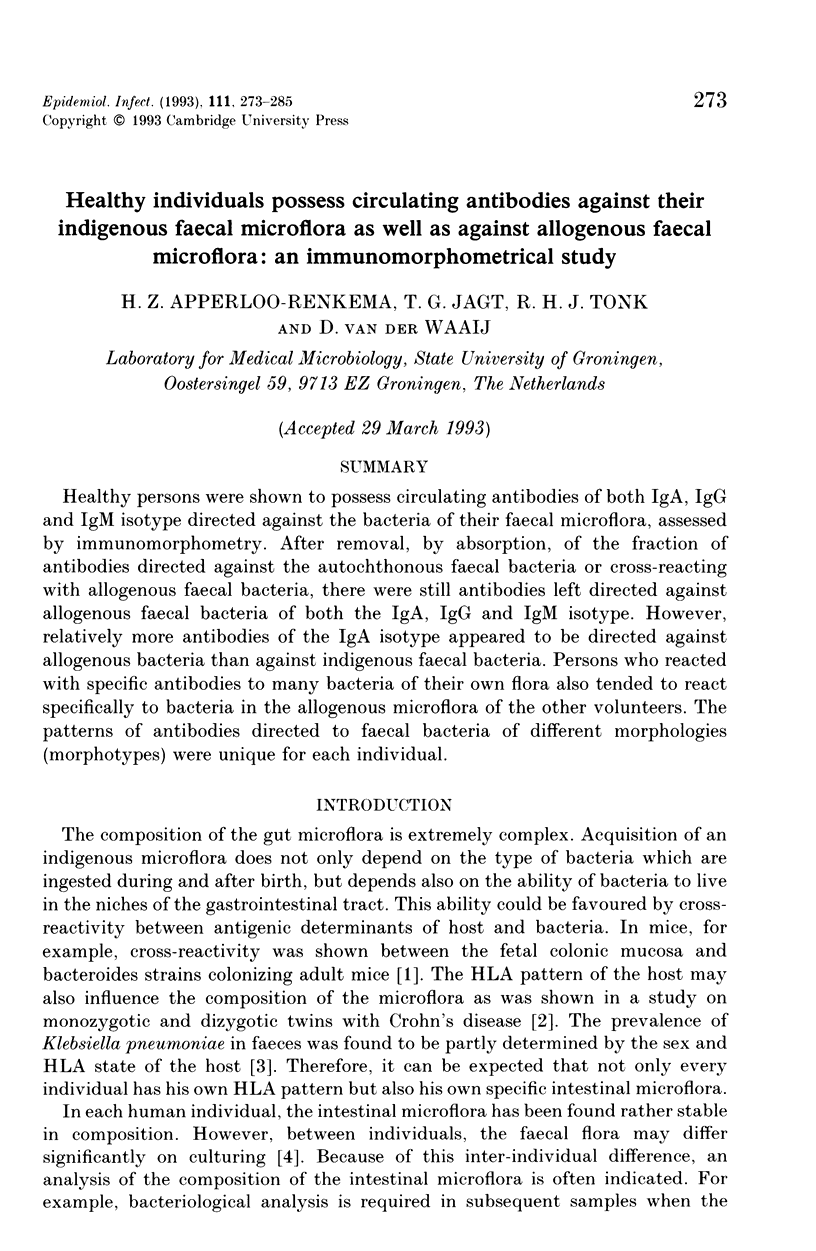
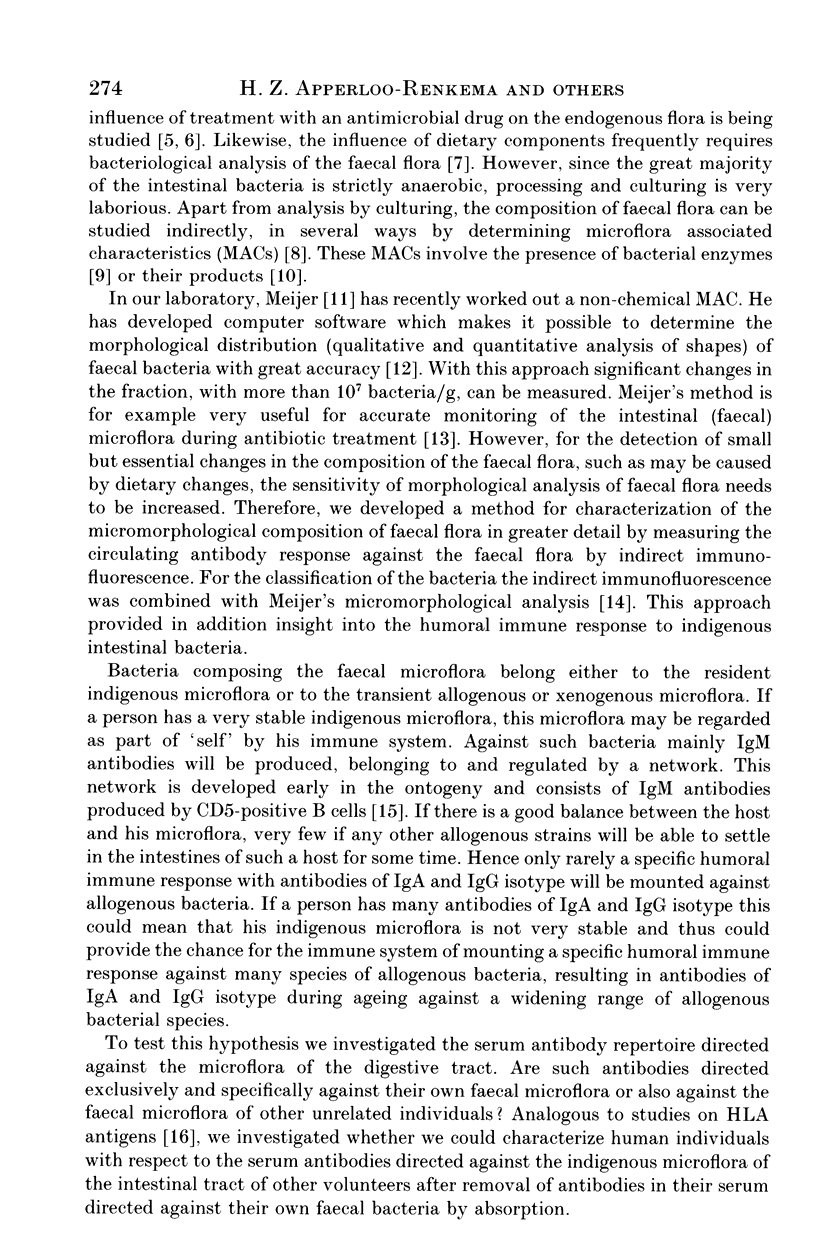
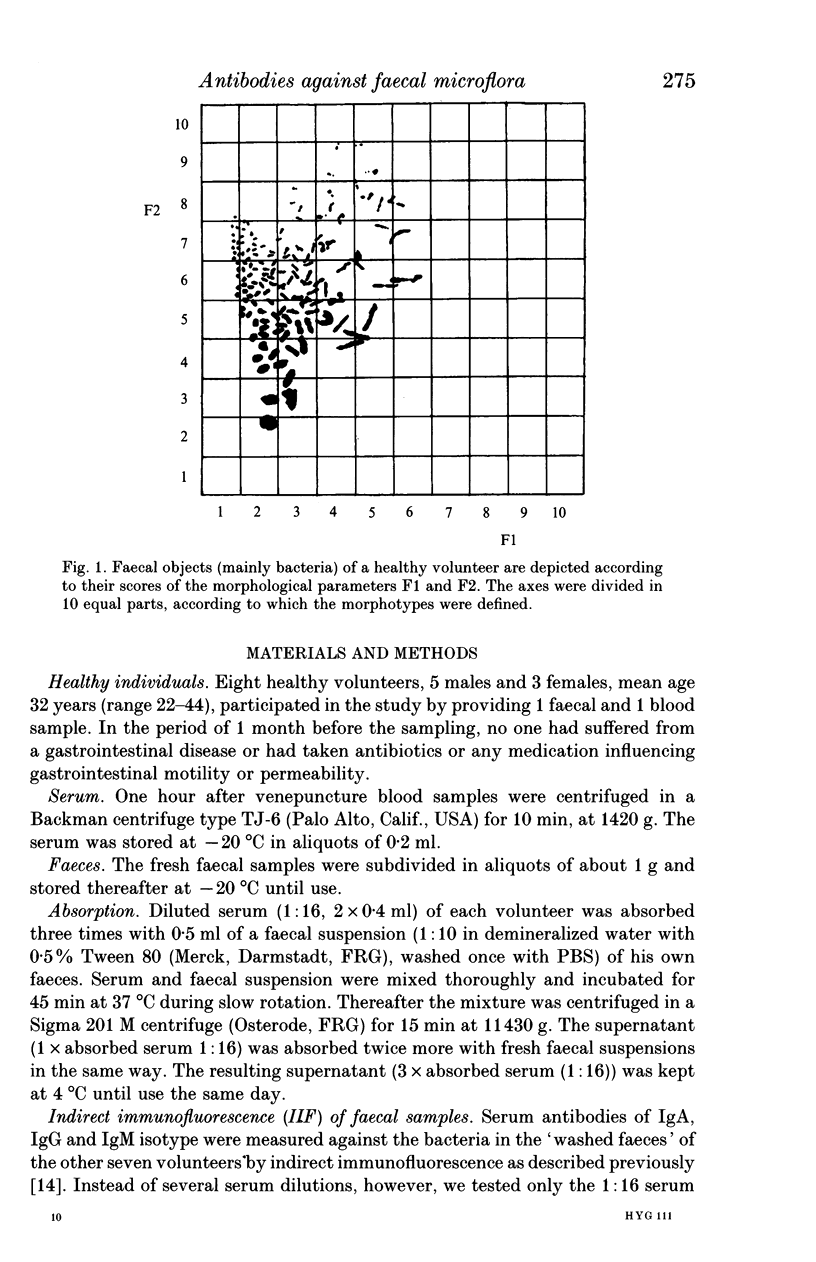
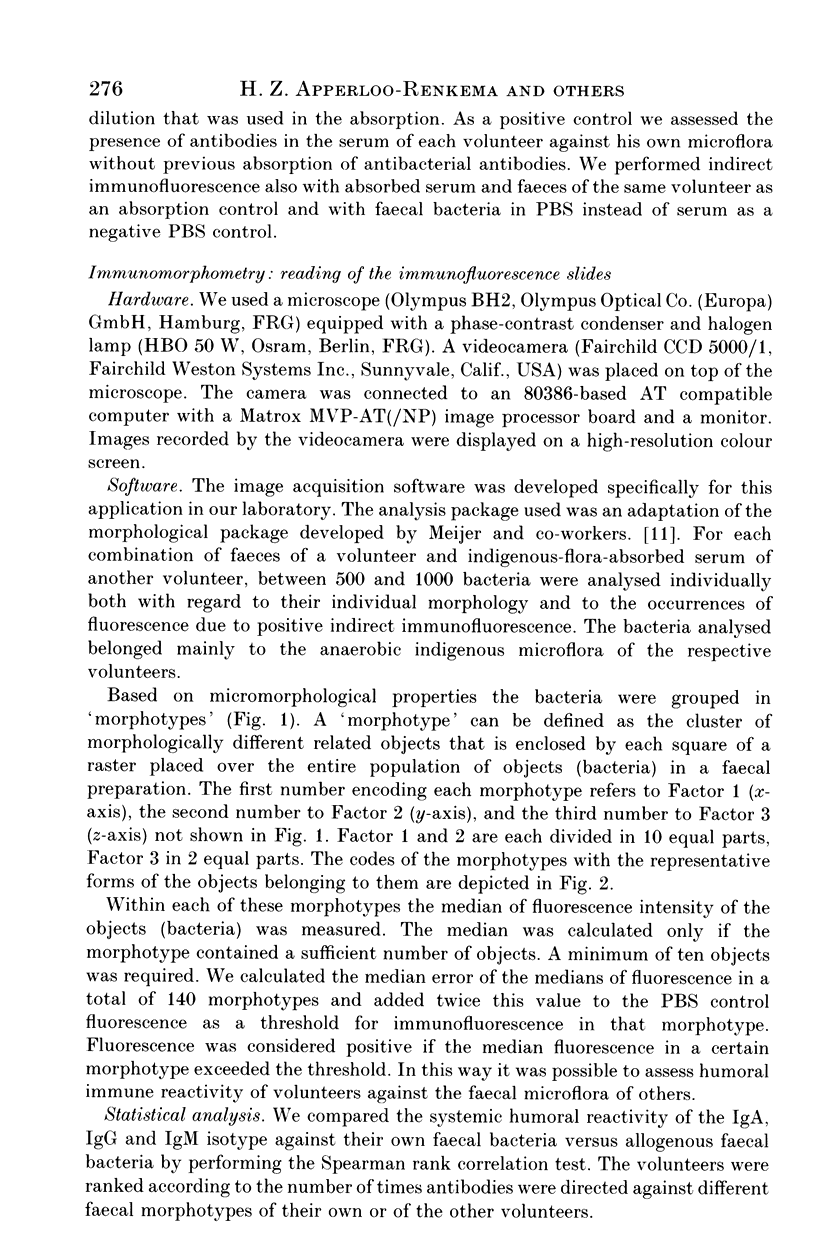
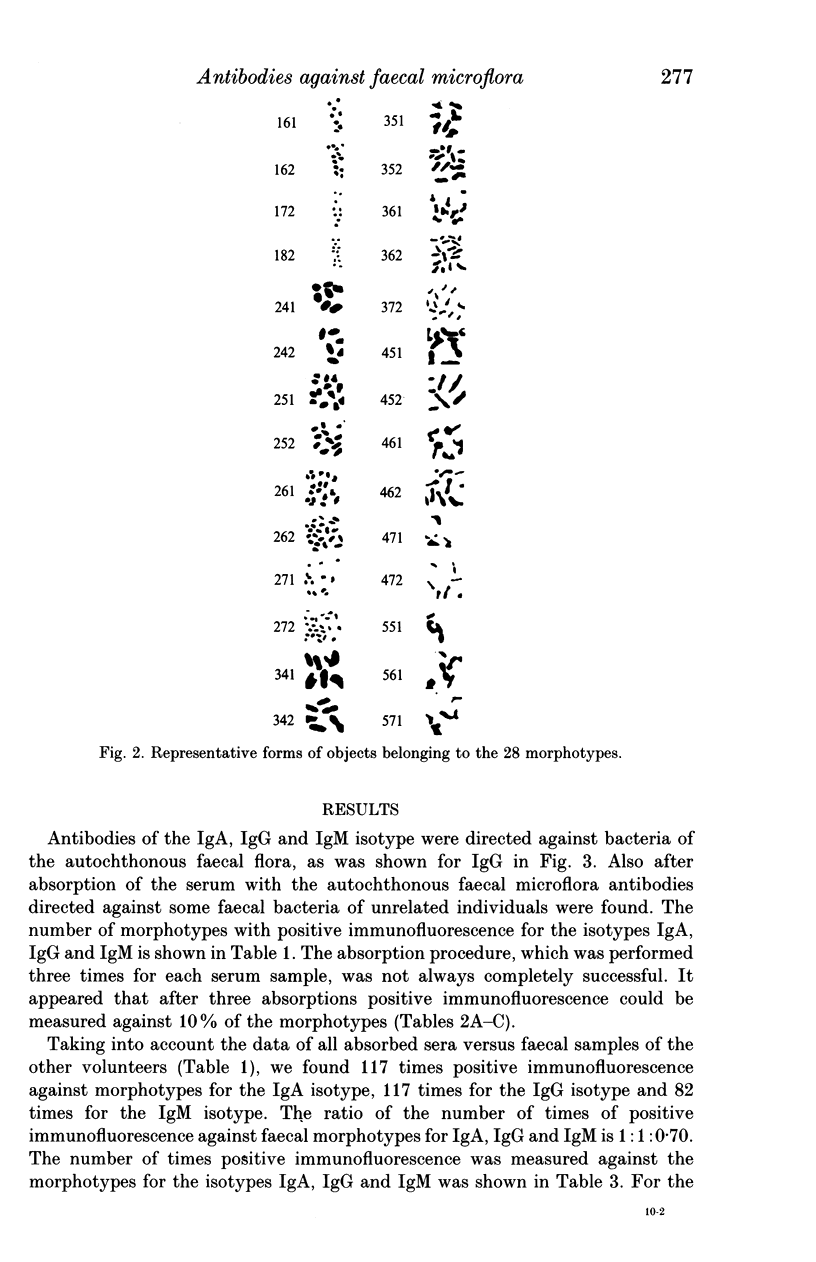
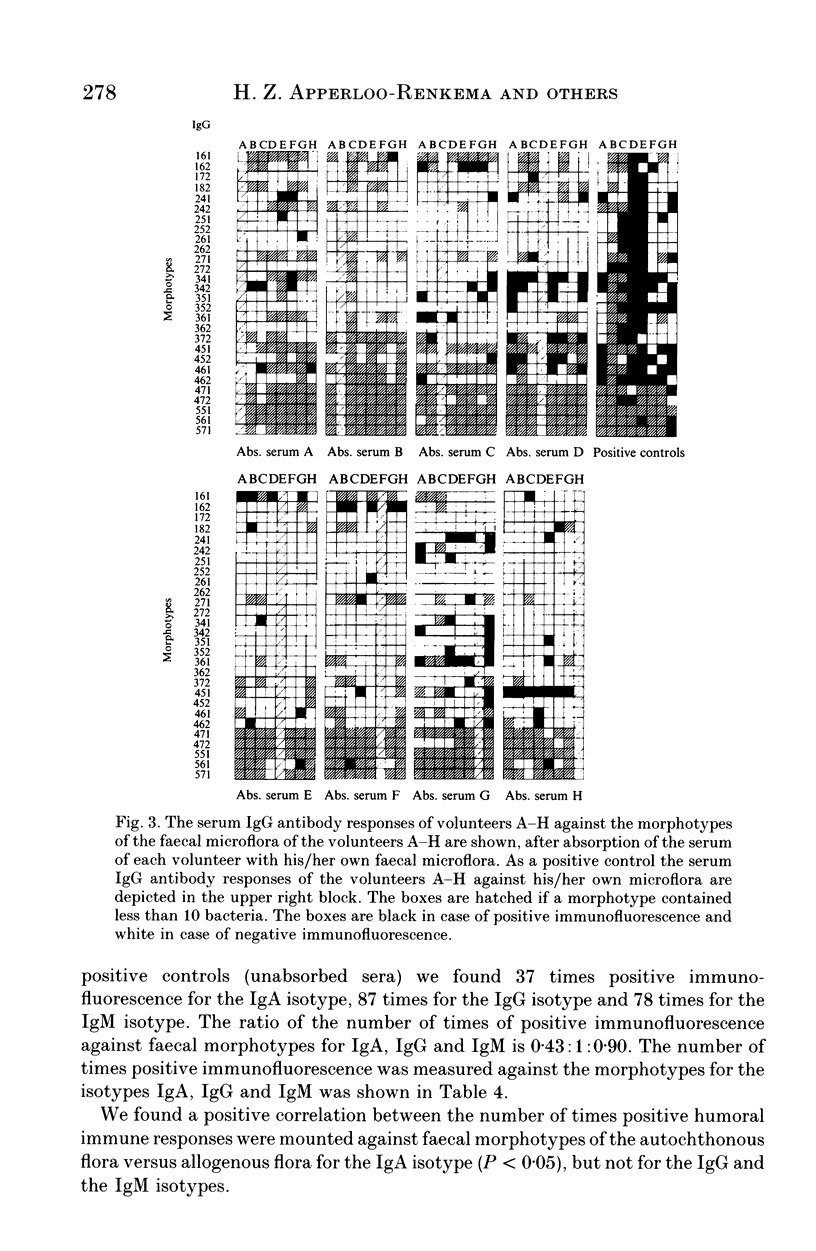
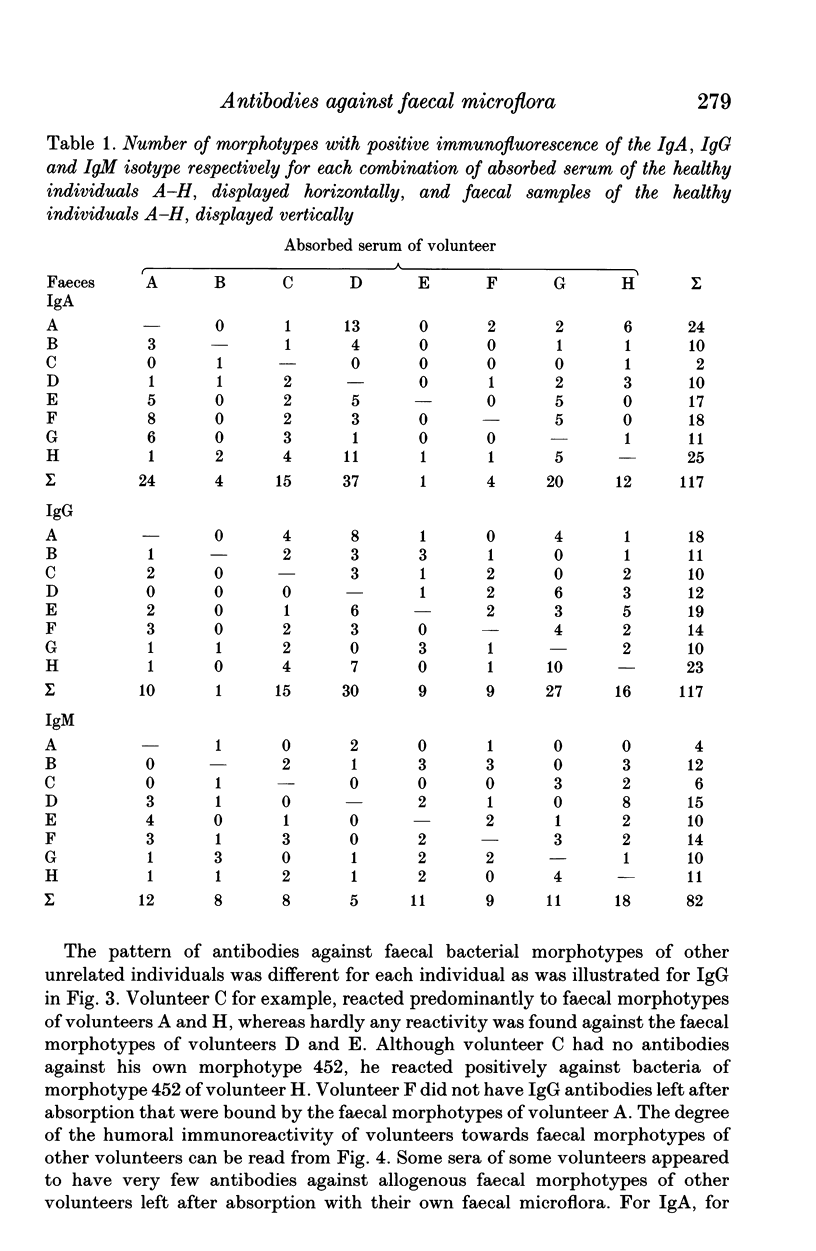
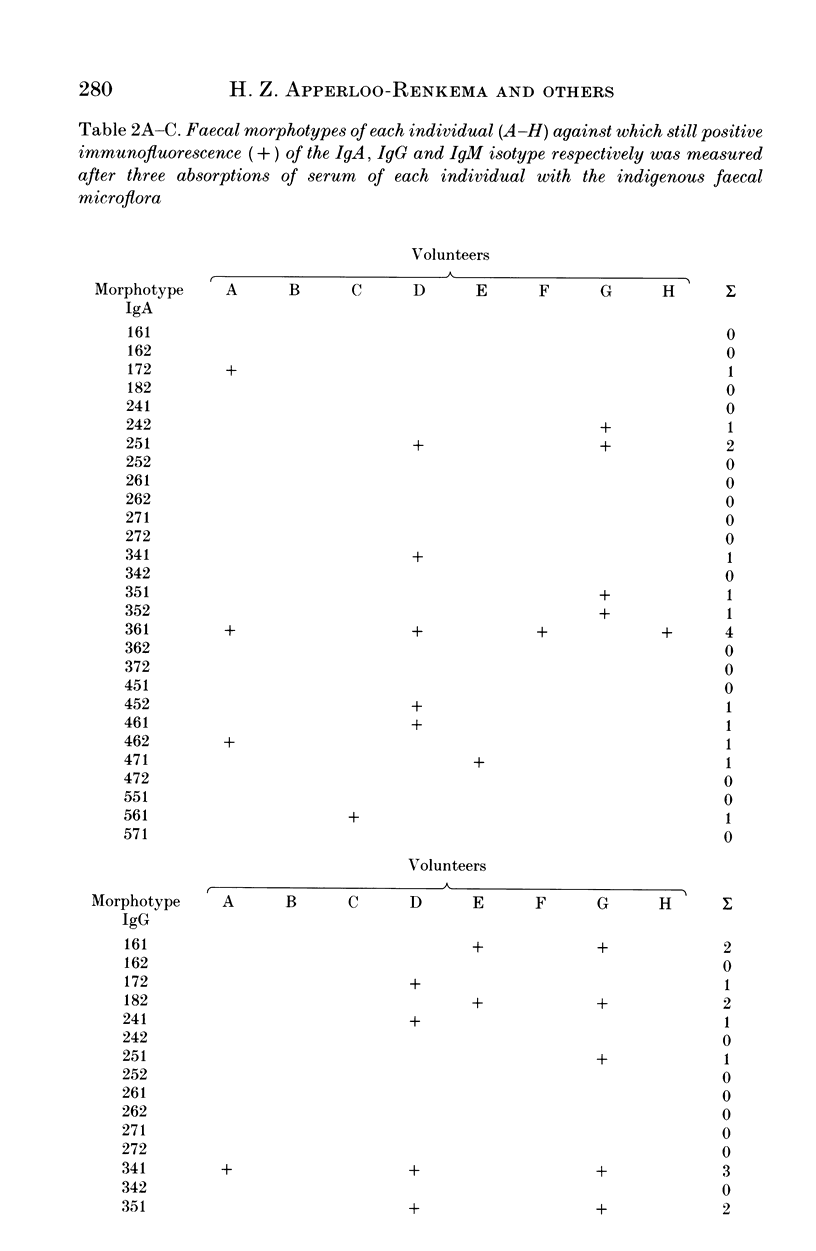
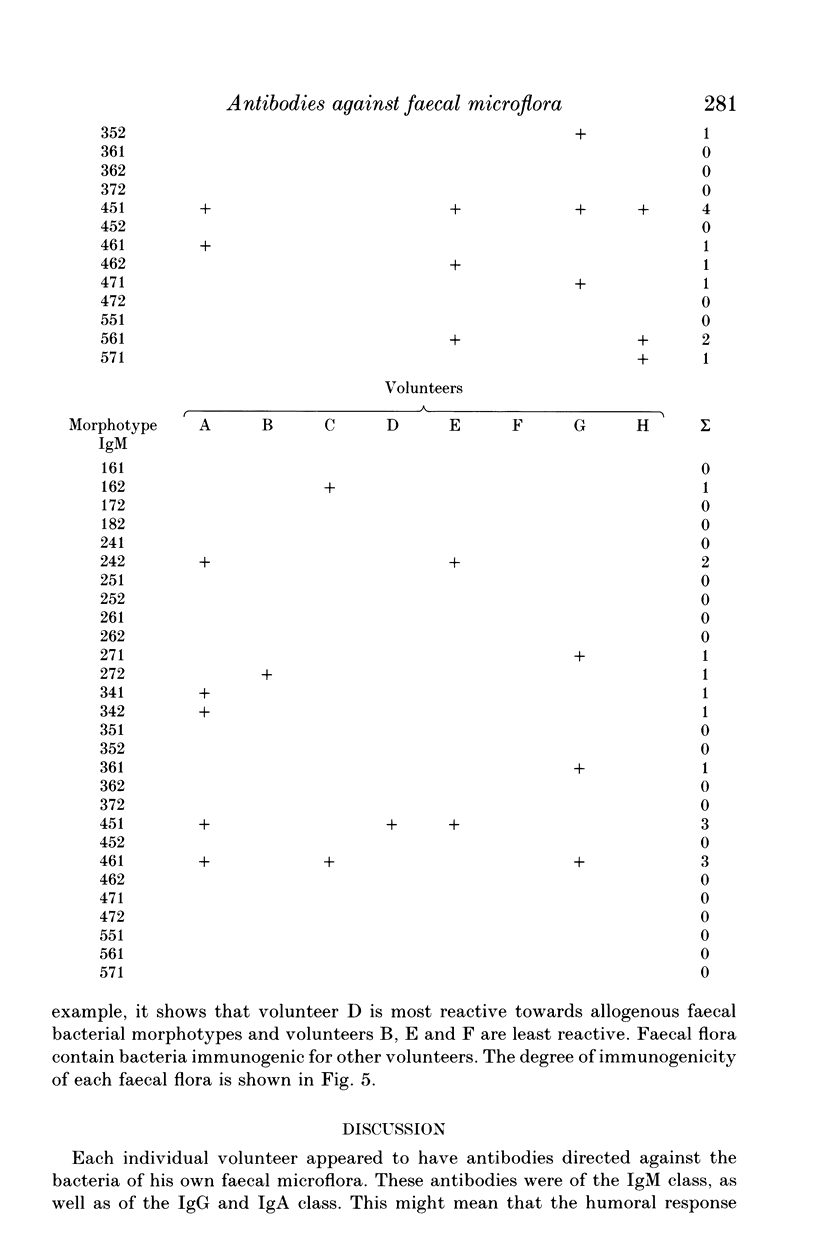
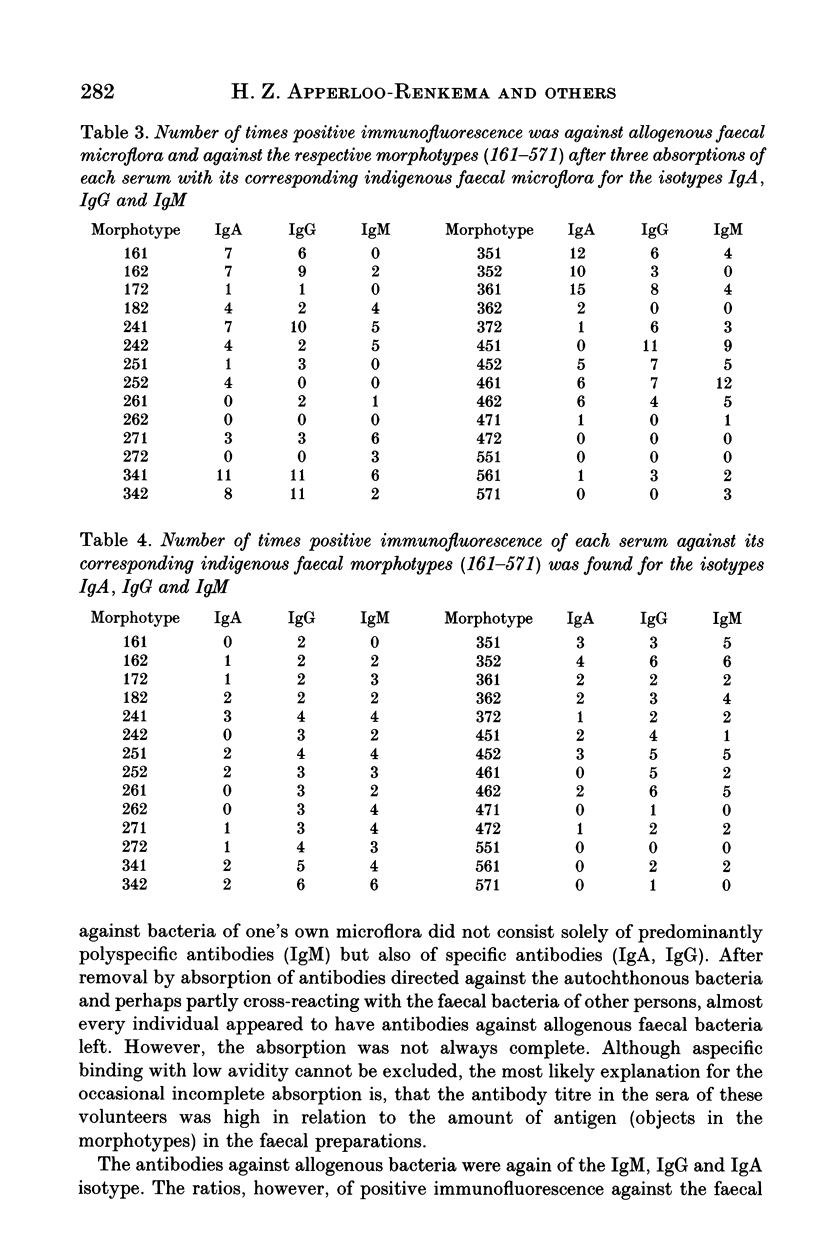
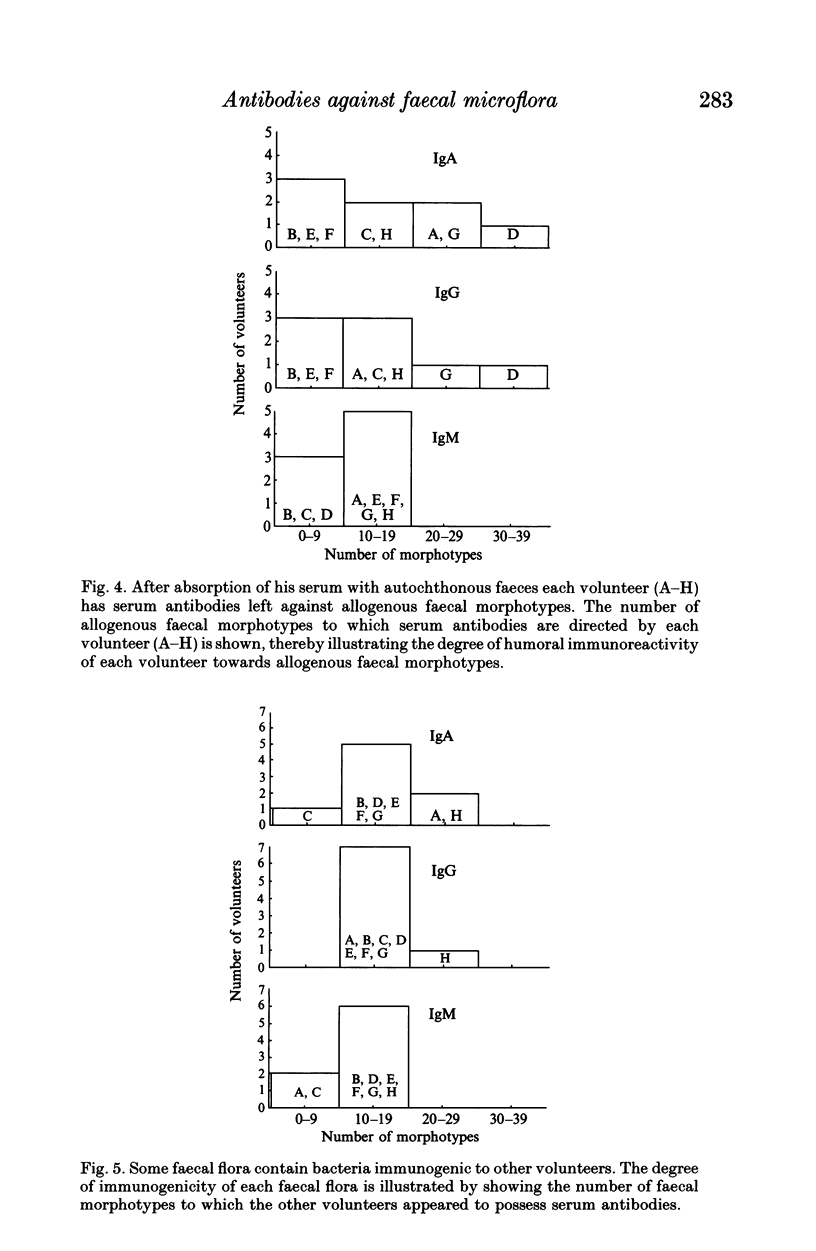
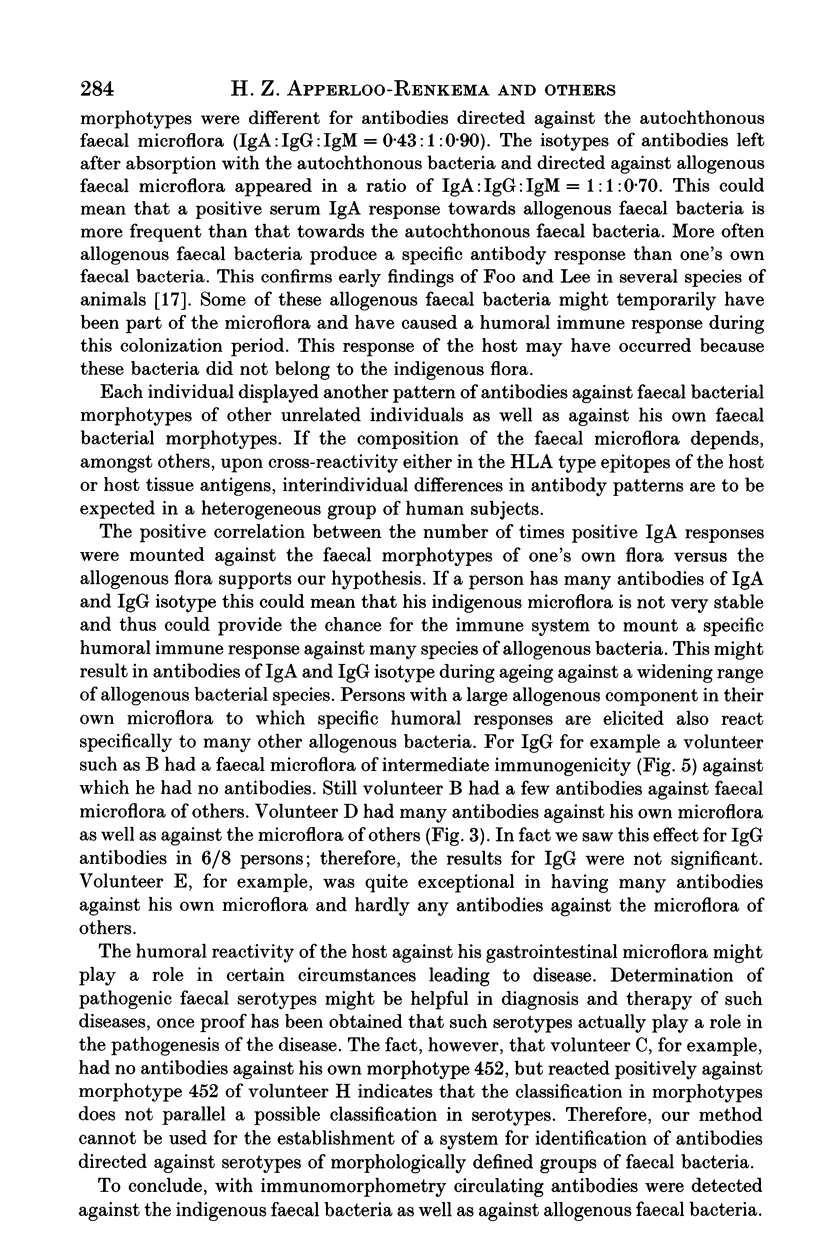
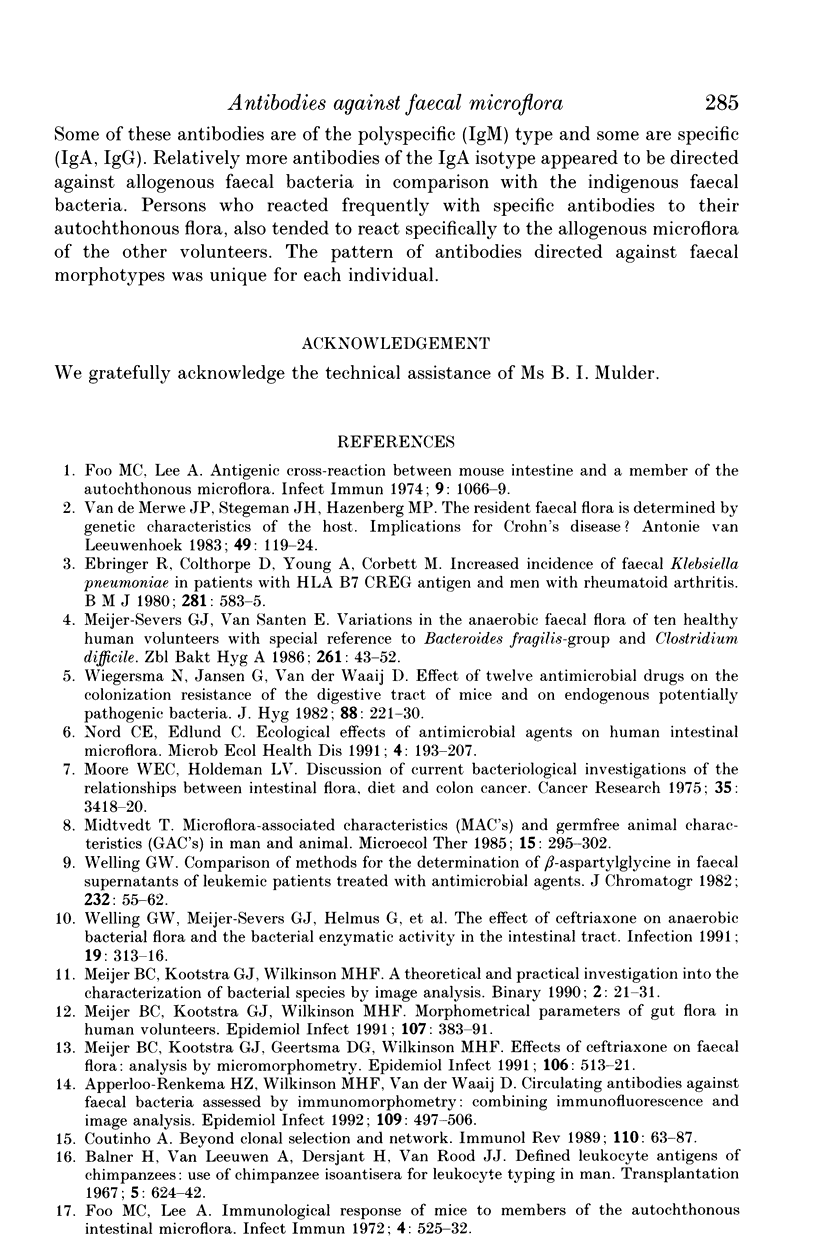
Selected References
These references are in PubMed. This may not be the complete list of references from this article.
- Apperloo-Renkema H. Z., Wilkinson M. H., van der Waaij D. Circulating antibodies against faecal bacteria assessed by immunomorphometry: combining quantitative immunofluorescence and image analysis. Epidemiol Infect. 1992 Dec;109(3):497–506. doi: 10.1017/s0950268800050494. [DOI] [PMC free article] [PubMed] [Google Scholar]
- Balner H., van Leeuwen A., Dersjant H., van Rood J. J. Defined leukocyte antigens of chimpanzees: use of chimpanzee isoantisera for leukocyte typing in man. Transplantation. 1967 Jul;5(4):624–642. doi: 10.1097/00007890-196707000-00007. [DOI] [PubMed] [Google Scholar]
- Coutinho A. Beyond clonal selection and network. Immunol Rev. 1989 Aug;110:63–87. doi: 10.1111/j.1600-065x.1989.tb00027.x. [DOI] [PubMed] [Google Scholar]
- Ebringer R., Colthorpe D., Young A., Corbett M. Increased incidence of faecal Klebsiella pneumoniae in patients with HLA B7 CREG antigen and men with rheumatoid arthritis. Br Med J. 1980 Aug 30;281(6240):583–585. doi: 10.1136/bmj.281.6240.583. [DOI] [PMC free article] [PubMed] [Google Scholar]
- Foo M. C., Lee A. Antigenic cross-reaction between mouse intestine and a member of the autochthonous microflora. Infect Immun. 1974 Jun;9(6):1066–1069. doi: 10.1128/iai.9.6.1066-1069.1974. [DOI] [PMC free article] [PubMed] [Google Scholar]
- Foo M. C., Lee A. Immunological response of mice to members of the autochthonous intestinal microflora. Infect Immun. 1972 Oct;6(4):525–532. doi: 10.1128/iai.6.4.525-532.1972. [DOI] [PMC free article] [PubMed] [Google Scholar]
- Meijer-Severs G. J., van Santen E. Variations in the anaerobic faecal flora of ten healthy human volunteers with special reference to the Bacteroides fragilis-group and Clostridium difficile. Zentralbl Bakteriol Mikrobiol Hyg A. 1986 Feb;261(1):43–52. doi: 10.1016/s0176-6724(86)80061-x. [DOI] [PubMed] [Google Scholar]
- Meijer B. C., Kootstra G. J., Geertsma D. G., Wilkinson M. H. Effects of ceftriaxone on faecal flora: analysis by micromorphometry. Epidemiol Infect. 1991 Jun;106(3):513–521. doi: 10.1017/s0950268800067571. [DOI] [PMC free article] [PubMed] [Google Scholar]
- Meijer B. C., Kootstra G. J., Wilkinson M. H. Morphometrical parameters of gut microflora in human volunteers. Epidemiol Infect. 1991 Oct;107(2):383–391. doi: 10.1017/s0950268800049025. [DOI] [PMC free article] [PubMed] [Google Scholar]
- Van de Merwe J. P., Stegeman J. H., Hazenberg M. P. The resident faecal flora is determined by genetic characteristics of the host. Implications for Crohn's disease? Antonie Van Leeuwenhoek. 1983 Jun;49(2):119–124. doi: 10.1007/BF00393669. [DOI] [PubMed] [Google Scholar]
- Welling G. W. Comparison of methods for the determination of beta-aspartylglycine in fecal supernatants of leukemic patients treated with antimicrobial agents. J Chromatogr. 1982 Oct 8;232(1):55–62. doi: 10.1016/s0378-4347(00)86007-7. [DOI] [PubMed] [Google Scholar]
- Welling G. W., Meijer-Severs G. J., Helmus G., van Santen E., Tonk R. H., de Vries-Hospers H. G., van der Waaij D. The effect of ceftriaxone on the anaerobic bacterial flora and the bacterial enzymatic activity in the intestinal tract. Infection. 1991 Sep-Oct;19(5):313–316. doi: 10.1007/BF01645354. [DOI] [PubMed] [Google Scholar]
- Wiegersma N., Jansen G., van der Waaij D. Effect of twelve antimicrobial drugs on the colonization resistance of the digestive tract of mice and on endogenous potentially pathogenic bacteria. J Hyg (Lond) 1982 Apr;88(2):221–230. doi: 10.1017/s0022172400070091. [DOI] [PMC free article] [PubMed] [Google Scholar]


